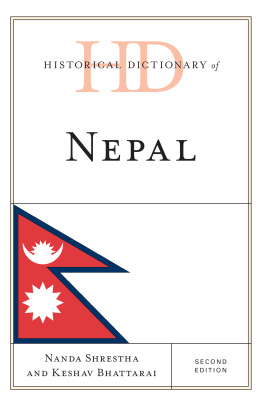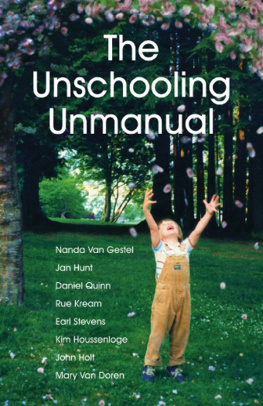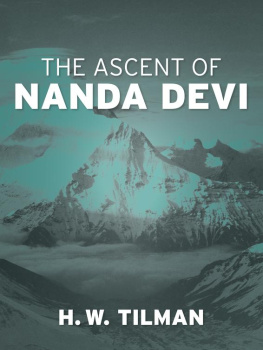To the memory of my parents, who taught me to fight against the oppressive forces in the name of justice and freedom
To all the peasants and workers who form the foundation of human history and human civilizations with their blood, sweat, and tears
To my wife, Pamela, and son, Kiran, for their support, patience, and understanding
First published 1990 by Westview Press, Inc.
Published 2018 by Routledge
52 Vanderbilt Avenue, New York, NY 10017
2 Park Square, Milton Park, Abingdon, Oxon OX14 4RN
Routledge is an imprint of the Taylor & Francis Group, an informa business
Copyright 1990 Taylor & Francis
All rights reserved. No part of this book may be reprinted or reproduced or utilised in any form or by any electronic, mechanical, or other means, now known or hereafter invented, including photocopying and recording, or in any information storage or retrieval system, without permission in writing from the publishers.
Notice:
Product or corporate names may be trademarks or registered trademarks, and are used only for identification and explanation without intent to infringe.
Library of Congress Cataloging-in-Publication Data
Shrestha, Nanda R.
Landlessness and migration in Nepal / by Nanda R. Shrestha.
p. cm. (Westview special studies in social, political, and economic development)
ISBN 0-8133-7677-7
1. Migration, InternalNepal. 2. Land tenureNepal. 3. PeasantryNepal. 4. Rural poorNepal. 5. NepalEconomic policy. I. Title. II. Series: Westview special studies in social, political, and economic development.
HB2096.9.A3S57 1990
304.8'09549'6dc19
88-20831
CIP
ISBN 13: 978-0-367-01283-0 (hbk)
I am a development victim, sir.
- A migrant peasant
The fall of 1979. I was back in Nepal for the first time since I left the country in 1972 to study in the United States. The purpose of my trip was to conduct a field survey for a rural-to-rural migration project. Lots of changes had taken place during my seven-year absence from the country. I could not recognize some of the places which I once knew like my backyard. While the physical changes as manifested in the forms of new houses and roads were quite apparent in several parts of Nepal, I was not sure if the country and its citizens as a whole had made any stride toward substantial progress, a concept which is admittedly nebulous and debatable. Many "development" projects were underway; they were either financed or directly implemented by several international donor agencies, including foreign charity organizations which are today commonly known as non-governmental organizations (NGOs). Integrated rural development (IRD) had emerged as the principal planning focus and as a hot topic of discussion among Nepalese policy-makers as well as foreign donor agencies. The overriding objective of the IRD planning approach was to fulfill the basic needs of the masses.
As a person born and raised in a very poor family in Nepal, the issues and images of poverty are never far from mind no matter where I go. While walking around, I noticed one thing over and over from this evolving canvas of change, that is, the contrast between the rich and the poor and between rural and urban areas. Some had become rich, including some of my friends. Most of the newly acquired wealth was closely tied to foreign monies flowing into Nepal in the form of aid and debts, to "dirty" money mostly made through smuggling, and to skyrocketing real estate values in urban areas. The contrasts never appeared as sharp in the past. This new wealth was largely displayed in the forms of conspicuous opulence, consumerism, and fancy bungalows. If opulence and fancy bungalows were any indication of the amount of money floating around, there was not a shred of doubt that Nepal had enough money to ride on its own back. But, little of this wealth was being invested to generate a dynamic motion of development.
In contrast to visual evidence of wealth, poverty was omnipresent. One could not overlook and escape it. I know first hand what it is like to be poor, to live in poverty, and to breathe poverty. I also know first hand what poverty does to the poor. It is a degenerative social disease, like the AIDS virus, that creeps into you and lives in you, chiseling away day after day your heart and mind, body and soul. However, my naked eyes could not determine whether the poor in general had become poorer than before in absolute terms. With this unavoidable general impression in mind, I departed for Chitwan, a district in the central Tarai region, to embark on my field research.
Early one morning in late October 1979, my field team and I were on our way to a survey village. We were riding our bikes, chatting and laughing, soaking in the cool refreshing early morning breeze, gently caressing our noses and cheeks. The sun was breaking out of its deep sleep. Fresh and bright. It was a gorgeous sunrise. Suddenly, our laughter was broken by a deep voice coming from far afield. A man, about 45 years old, came running toward us. "Help, help!" We all stopped. He held onto my bike and said in a sobbing voice, "I am a development victim, sir. Please help me. I have lost all of my land." He went on in desperation, "I had three bighas of land (1 bigha = .68 hectare). Using my land as security, I got a loan from the Agricultural Development Bank to open a fish farm. The Bank gave me a loan, but no technical support. I did open a fish farm. One day there was heavy flooding and the whole fish farm was washed away. I lost everything. I had to sell my land to pay the loan. Later, I got another loan and tried to do goat farming, but that also failed. When a disease struck the goats, there was no timely veterinary help available to save my goats. Eventually, most of the goats died."
He had arrived in Chitwan in 1965. He was not a poor migrant when he moved to Chitwan from the adjoining hills. He had sold his land in the hills and with the money he had managed to buy land in the Tarai. I later asked other villagers about his case. He had indeed lost most of his land. He had only half a bigha of land left. After we returned in the late afternoon, I reflected back on how this peasant described his deteriorating situation. Indeed, "a development victim!" How cruel and ironic!
A few days later, I met another hill migrant. He left the hills in 1962; actually he ran away from the family that had held him in debt bondage for eight years. His father had borrowed 50 rupees (at the current exchange rate Rs. 28 = $1) from a local moneylender for the funeral of his mother who had died of tuberculosis. Two years later his father passed away before paying off the debt. In the two year period the moneylender had added another 50 rupees in interest to the principal. This migrant was 11 at the time of his father's death. Since he was the only surviving member, the moneylender, after grabbing his small plot of land, held him in bondage for the debt his father had incurred.
One night he made up his mind to run away from the family and fled to Chitwan, a popular destination for most hill migrants in those days. Despite several attempts (applications) to receive some land from the government, he failed. In late 1979, taking advantage of the political upheaval that was underway, the peasants throughout the Tarai decided to participate in what was called the Sukumbasi (i.e., landless) movement. The movement was particularly intense in Chitwan. He felt that this was his only chance to acquire some land, so he decided to follow other landless hill migrants and encroached on public land.









